Watching genre, in black-and-white
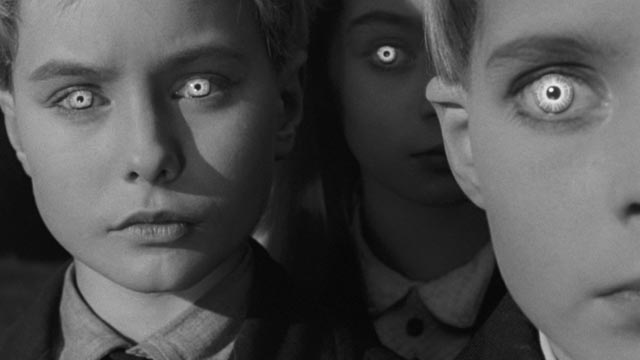
There are days when I have a hard time deciding what to watch. Partly it depends on my mood in that moment … sometimes I even start watching something and give up after a few minutes because it’s not “the right one”. And sometimes it’s a function of keeping up this blog. I keep passing over things I’d like to watch because I don’t feel ready to write about them, which means that I have an ever-expanding backlog of really good movies that I’m not watching because it’s just easier to watch something less demanding (in terms of the mental energy I need to put into viewing it and the depth of what I might need to say about it). As the weeks go by, it starts to prey on my mind that not only does this blog distort my viewing choices, it also gives a skewed impression of my actual tastes and interests. Why do I watch and write about Albert Pyun’s Nemesis (1992) instead of the copy of Elio Petri’s Property Is No Longer Theft (1973) which has been sitting on the shelf for months?
In a sense the blog itself produces randomness and incoherence by making me shy away from more demanding works while simultaneously pressing me to write about the lesser stuff I do watch. But I guess this perceived burden is at least partially an excuse to watch trashy entertainment instead of genuine film art. It’s just that sometimes I get really self-conscious about my choices and worry about being judged (I have a friend who decided years ago that he would only watch great movies because he only had so much time and didn’t want to waste it).
Which brings me to the current post, in which I continue my futile attempt to play catch up with my recent viewing, but try to raise the tone a bit. The connections among the three movies here are purely coincidental and essentially meaningless: they’re all genre movies, they’re all shot in excellent black-and-white, two of them feature drunk driving, and they’re all by (more or less) English directors – two who started their careers in England but eventually moved on (one directly to Hollywood, the other into international production), the third born in Germany, but moving to England when Hitler came to power and spending his entire filmmaking career there. But beyond those details, they’re appearing here because each film has its own intrinsic interest for me.
*
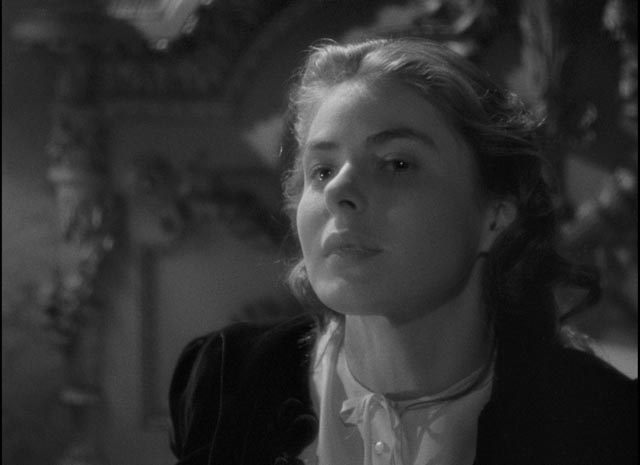
Notorious (Alfred Hitchcock, 1946)
When my friend Howard recently asked to borrow my Criterion DVD of Alfred Hitchcock’s Notorious (1946) for one of his classes, I was reminded that I hadn’t watched the film in years and also that I had it on a Blu-ray (in the three-disk Alfred Hitchcock: The Classic Collection set) which I’d never got around to watching. On its surface, Hitchcock’s first production after the end of the war seems to belong in that line of romantic adventures which runs from The 39 Steps (1935) through North By Northwest (1959) to Torn Curtain (1966), movies which use the trappings of espionage as a mere device to bring together a couple fated to be together.
I’m not sure if I’d simply forgotten, or whether I’d never before been quite aware of just how dark and perverse Notorious is. The couple in question are Alicia Huberman (Ingrid Bergman), the good-time girl daughter of an American Nazi recently convicted as a traitor and sent to prison where he committed suicide, and Devlin (Cary Grant), a suave government agent on the trail of an underground Nazi group who may be engaged in actions which threaten the new peace. Devlin insinuates his way into Alicia’s life (a seemingly endless round of parties and heavy drinking) and, finally revealing his own identity after she’s become attracted to him, persuades her to atone for her father’s sins by helping the agency.
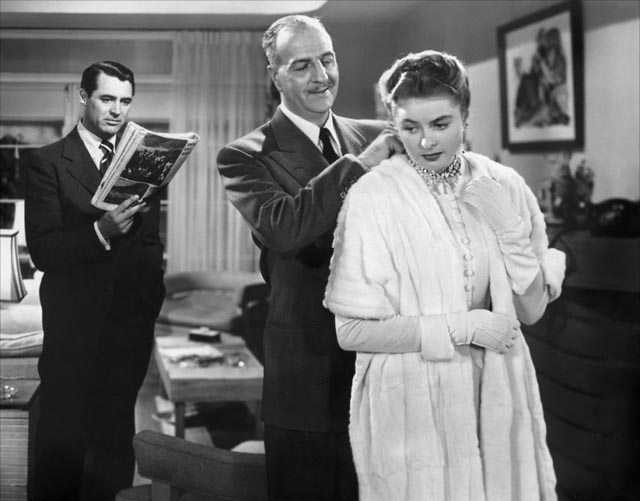
That help involves going to Buenos Aires and “accidentally” running into Alexander Sebastian (Claude Rains), a member of a Nazi clique once connected with her father. An older man, Sebastian had been infatuated with Alicia back in the States and is delighted to reconnect with her. Devlin’s need to infiltrate the group and discover their plans makes him push Alicia towards Sebastian. Her desire to atone and her romantic feelings for Devlin give him power over her; she wants both his approval and his affection … but he withholds the latter, being quite deliberately cold and even cruel. Yet while this aligns with his mission, it’s driven by suppressed jealousy because he has also fallen in love with her and his job involves pushing her towards another man.
This suppressed web of feelings is further complicated when Alicia agrees to marry Sebastian to fulfill the mission. This in turn is further complicated by Sebastian’s unhealthy relationship with his mother – a kind of proto-Norman Bates/Mrs. Bates attachment. In essence, Notorious is the story of a man who pimps the woman he loves to another man who is conflicted by suppressed incestuous feelings for his mother, and it takes the almost-sacrifice of Alicia to resolve the narrative complications.
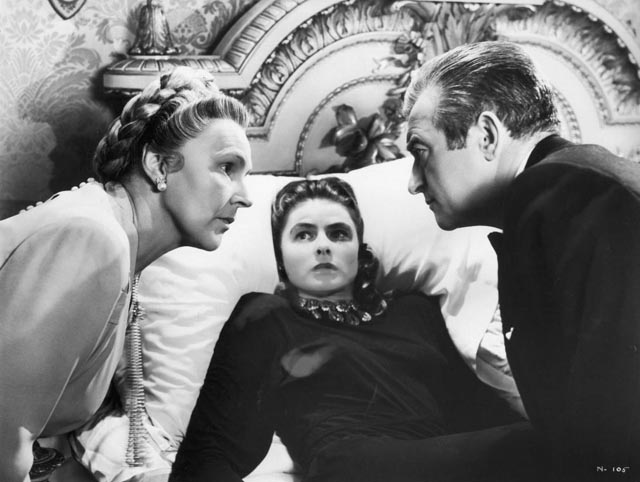
It’s amazing that Ben Hecht’s script made it past the Breen office – no doubt largely due to Hitchcock’s prestige and the casting of Grant and Bergman as the romantic couple. Yet, although the mission is a success and Devlin rescues Alicia in time, the atmosphere of perverse anti-romanticism isn’t really dispelled at the end. Of course, the movie can’t be completely explicit, but there can be no doubt that Alicia and Sebastian consummate their marriage; she has sex with a man she despises because it’s what the man she loves insists she do to make up for a corrupt past.
The perversity which permeates Notorious reflects the unsavoury aspects of Hitchcock more clearly than almost any other of his films (perhaps only matched by Vertigo [1958] and his late masterpiece Frenzy [1972]), yet it’s delivered with deft assurance and a lightness of touch which disguises the darkness as some kind of conventional Hollywood romantic adventure. It’s one of the director’s most complex and perfectly realized entertainments.
The disk includes a number of extras carried over from an earlier DVD edition: a pair of commentaries and several featurettes and interviews.
*
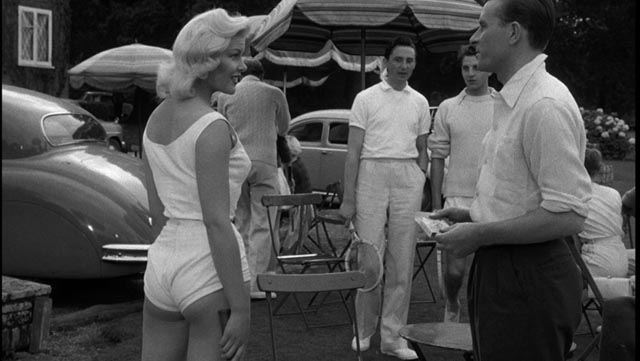
Town on Trial (John Guillermin, 1957)
John Guillermin was a journeyman director rather than an auteur, his output all over the place in terms of genre and style. He began with a handful of minor English movies in the 1950s, became an international director in the ’60s, and wound up making mostly undistinguished big budget producer-driven movies in the ’70s and ’80s – sometimes with reasonable success (Irwin Allen’s The Towering Inferno, 1974), sometimes disastrously (Dino De Laurentiis’ King Kong, 1976). But along the way he made some interesting small films – Never Let Go (1960), a nasty British noir which gave Peter Sellers his grimmest role as a sadistic gangster; Rapture (1965), a girl’s coming-of-age story with a feverish atmosphere and wonderful black-and-white photography, shot on location in Brittany – and one great epic, The Blue Max (1966).
I’d never come across his film Town on Trial until its release on Blu-ray by Indicator and it turns out to be an interesting, well-crafted slice of English class-noir, directed with a very un-English kind of energy which is immediately declared in the opening shot: the camera is close to the surface of a road as a police car races towards it, coming to an abrupt stop seemingly inches from the lens. Guillermin evokes that early cinema primal shock which makes the viewer feel that the vehicle is likely to burst through the screen and land in the audience’s lap.
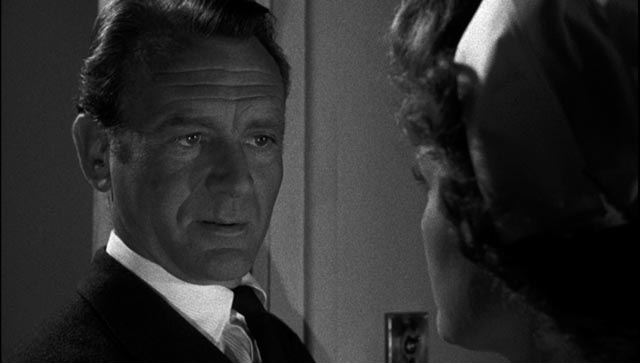
A handcuffed man (whose face we don’t see) is hurried into the police station, having just been arrested for murder. We then slip into flashback with a point-of-view shot moving through the middle- and upper-class members of the local tennis club, coming to a stop to watch a particular woman on the court. Dressed in white, very tight short shorts and revealing top, Molly Stevens (Magda Miller) seems deliberately provocative. When the camera cuts to a reverse shot, we see several men watching her and have no way of knowing whose point of view we were just seeing. This sets up three possible suspects for the murder which is about to occur.
After Molly is strangled in the nearby woods, Superintendent Mike Halloran (John Mills) arrives from London to take over the investigation. More than a police procedural (as the title indicates), the film is a melodrama of class prejudice and conflicts with echoes of the Peyton Place type of multi-character potboiler. While the story isn’t particularly strong as a who-done-it, the film has much to recommend it, beginning with Guillermin’s direction. Criticized at the time for its obvious attempt to emulate an American style, it has an energy not typical of British films of the period – dynamic framing and camera movement, aggressive cutting which propels Halloran’s investigation with a sense of urgency. A side effect of the stylistic approach is an odd distortion (even falsification) of the English provincial town milieu, which is inflected with echoes from Hollywood movies – most blatantly in the drunken hot-rodding young adults who hang out at a “roadhouse” on the edge of town. This is straight out of an American juvenile delinquent movie, hardly true to the actual disaffected youth culture of England at the time (which would very soon erupt in the violent clashes between Mods and Rockers).
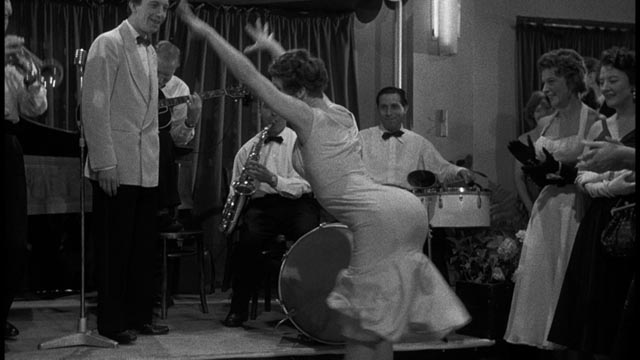
As important to the film’s overall dramatic effect as Guillermin’s style is John Mills’ Halloran. Investigating among the town’s leading citizens, who would rather the whole thing be quickly forgotten because the murder threatens to expose the elements of corruption underlying a veneer of respectability, Halloran pushes back not simply because he wants to get at the truth but also because he has risen from a lower class background and despises the hypocrisies of privilege. His position – and the crime he’s investigating – give him license to express open contempt for these people, an attitude which brings a pointed English counterweight to the Americanized style.
While the story climaxes in a big action-suspense finale, the film’s pleasures reside in its stylistic tensions and the details of its class commentary. The cast is very good and the narrative is laced with strong dramatic confrontations which point towards the British New Wave films of just a few years later, where anger and class resentments surfaced with a vengeance.
Town on Trial looks gorgeous on Indicator’s Blu-ray. The photography by Basil Emmott (someone whose name I wasn’t familiar with, though he shot almost two hundred movies between 1920 and 1965 – and who is mentioned quite frequently in volume four of Rachael Low’s History of the British Film, which I just finished reading) is rich in shadows and strong contrast. The disk has some substantial extras, including a lengthy audio interview with John Mills from 1972; an interview with film historian Barry Forshaw about the film; and Guillermin’s early short feature Adventure in the Hopfields, made for the Children’s Film Foundation in 1954, in which the talented child actress Mandy Miller (Alexander Mackendrick’s Mandy [1952], Hammer’s The Snorkel [1958]) plays a girl from London’s East End who, against her mother’s wishes, joins the annual exodus of hop-pickers to the fields of Kent. There’s also a brief interview with focus puller Alec Burridge about the making of this film.
*
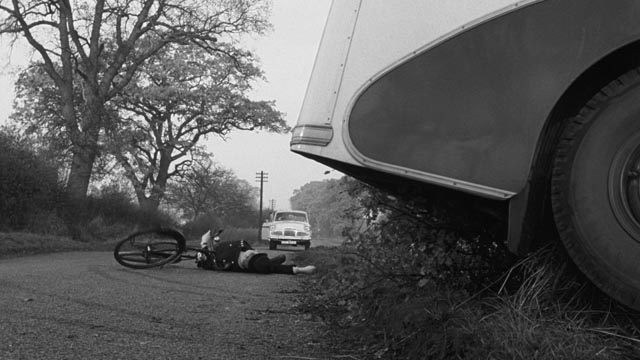
Village of the Damned (Wolf Rilla, 1960)
German-born Wolf Rilla had a fairly undistinguished career in British film and television and is mainly remembered for Village of the Damned, his 1960 adaptation of one of John Wyndham’s novels. Wyndham was one of the most successful writers of science fiction Britain had produced up to that time. Although he had begun with some early pulp sci-fi in the 1930s, he became prominent in the ’50s for a series of apocalyptic novels in which ordinary people struggle to survive catastrophes which cause the breakdown of organized society. These began with The Day of the Triffids (1951), in which deadly plants prey on a population blinded by radiation from a meteor swarm; continued through The Kraken Wakes (1953), in which aliens under the sea melt the ice caps, flooding coastal areas; to The Chrysalids (1955), about a society thrown back to Dark Age conditions by nuclear war, in which religious fundamentalism is at odds with mutants, some of whom are children with advanced mental powers. This part of Wyndham’s career ended with The Midwich Cuckoos (1957), which built on the theme of The Chrysalids by locating mutated children in a contemporary English village.
The film, retitled Village of the Damned (1960), is quite faithful to the book, though at 77-minutes it pares the story down to its essentials. It starts, as the book does, with some invisible force enclosing the quiet village of Midwich, rendering the population unconscious. Attempts to penetrate the field all fail (including a plane which crashes after flying over the village), but it spontaneously disappears after twenty-four hours and everyone wakes up. There seem to be no aftereffects … until some weeks have passed, when the local doctor discovers that every woman in the village is pregnant. The social implications of this are touched on (angry husbands and fathers feeling betrayed by their wives and daughters, although no voluntary action was involved), but the film needs to hurry to the main point of the story.
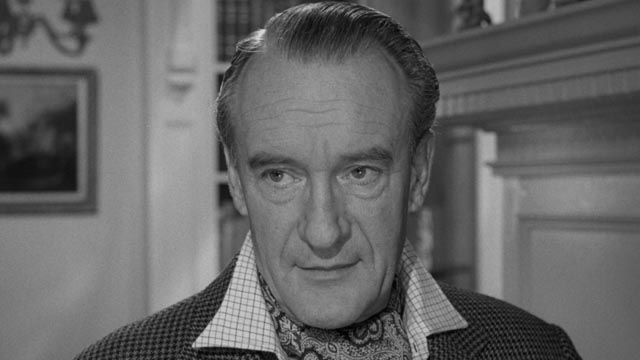
Whatever alien force was responsible for these “virgin births”, the children which result are quickly seen to be different. Professor Gordon Zellaby (George Sanders), whose wife Anthea (Barbara Shelley) has given birth to one of the children, makes a dispassionate study of them, soon discovering that they are developing far more rapidly than normal children, both physically and mentally … and that they seem to have powerful extrasensory abilities. He persuades the authorities to allow him to gather the children together in a school, where he will both educate and study them. But the locals grow more fearful and prejudiced – with good reason as it becomes clear that the children can defend themselves by using their minds to inflict violence on anyone they deem a threat.
Eventually Zellaby has to face the fact that these alien children are essentially an invading force which will soon become too powerful to contain. Reports of similar groups from other parts of the world make it clear that some defensive action is needed; in Russia, for instance, an entire town has been obliterated with a nuclear blast to destroy the children there. Zellaby has to devise a way of destroying the children despite their ability to read minds and know when the threat is coming.
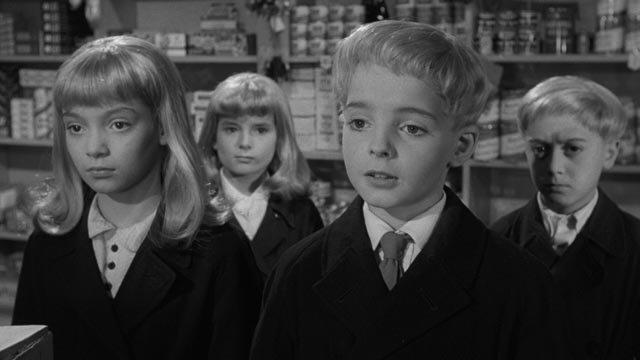
Village of the Damned is a chilly film, taking its cue from Zellaby’s dispassionate interest in the strange children. They in turn exhibit no human warmth, merely intellectual curiosity and a defensive group solidarity. The scenes in which the children turn their powers on perceived threats are some of the most disturbing of the period – they force a van driver to race full speed into a brick wall, make a farmer turn his shotgun on himself and blow his own head off. (Joseph Losey’s These Are the Damned, made for Hammer two years later, provides an interesting contrast, taking the side of its mutant children against the cold-blooded, violent society which imprisons them.)
John Baxter in Science Fiction in the Cinema (Paperback Library, 1970) dismisses the film as flat and dull, lacking in style. But its detached naturalistic approach to the story is similar to Don Siegel’s in Invasion of the Body Snatchers (1956), using a plain, unemphatic style to normalize rather than emphasize the genre elements. In this, Rilla (along with co-writers Stirling Silliphant and producer Ronald Kinnoch) captures the particular flavour of Wyndham’s work, which has been described as “cozy catastrophe”, treating global disasters from the intimate, personal perspective of a few unexceptional characters. This gives the fantastic events an air of reality more effective than a deliberately fanciful approach.
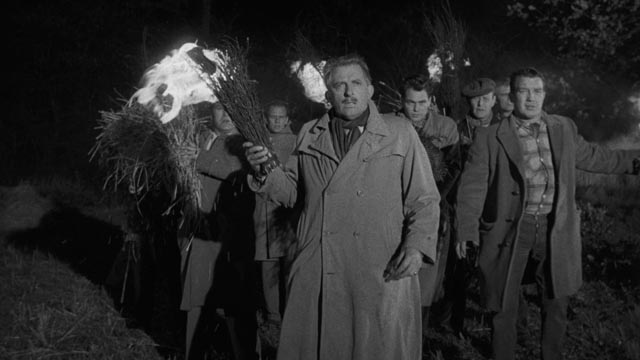
The movie industry tended to shy away from using children as villains, doing its best to preserve the idea of childhood innocence (Mervyn LeRoy’s The Bad Seed [1956] being a notable exception). Village of the Damned changed that, paving the way for a whole sub-genre of “evil kids” horror. It was as if it broke a taboo and opened the way for admitting that all children are alien intruders who come to disrupt (and threaten) the established lives of adults. Despite being sixty years old, the film still has a potent impact with its images of the inscrutable little terrors willing their adult oppressors to death.
Village of the Damned looks terrific on the Warner Archive Blu-ray, with excellent contrast and a subtle film-like texture. The only extra is Steve Haberman’s commentary, carried over from the 2004 DVD edition … which raises the one disappointing aspect of the release: the DVD also included Anton M. Leader’s excellent “sequel” (really a variation on the theme) Children of the Damned (1963). A pity Warners didn’t also make the Blu-ray a double-feature.
Comments